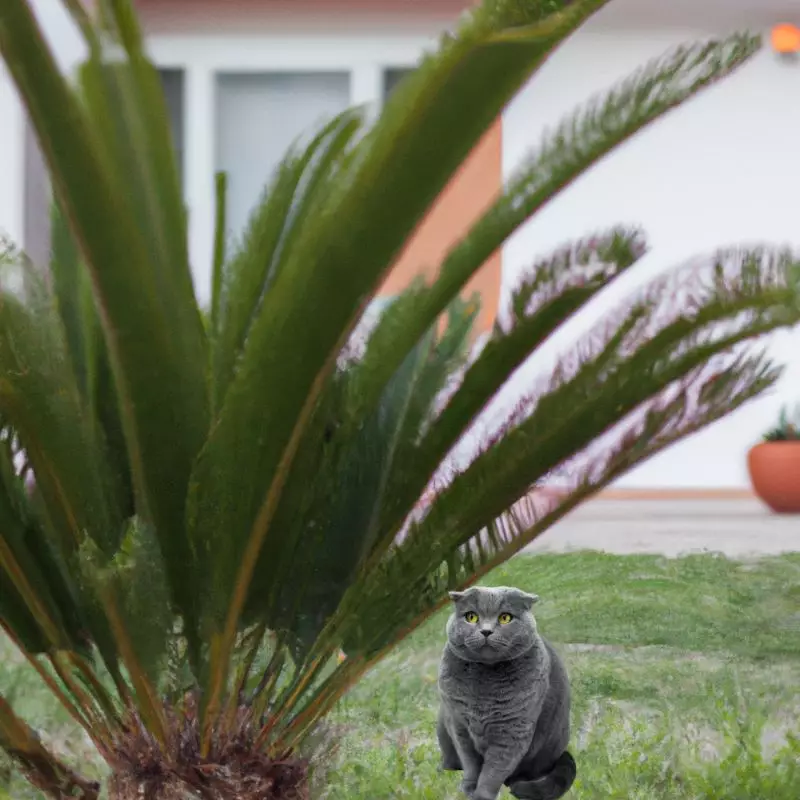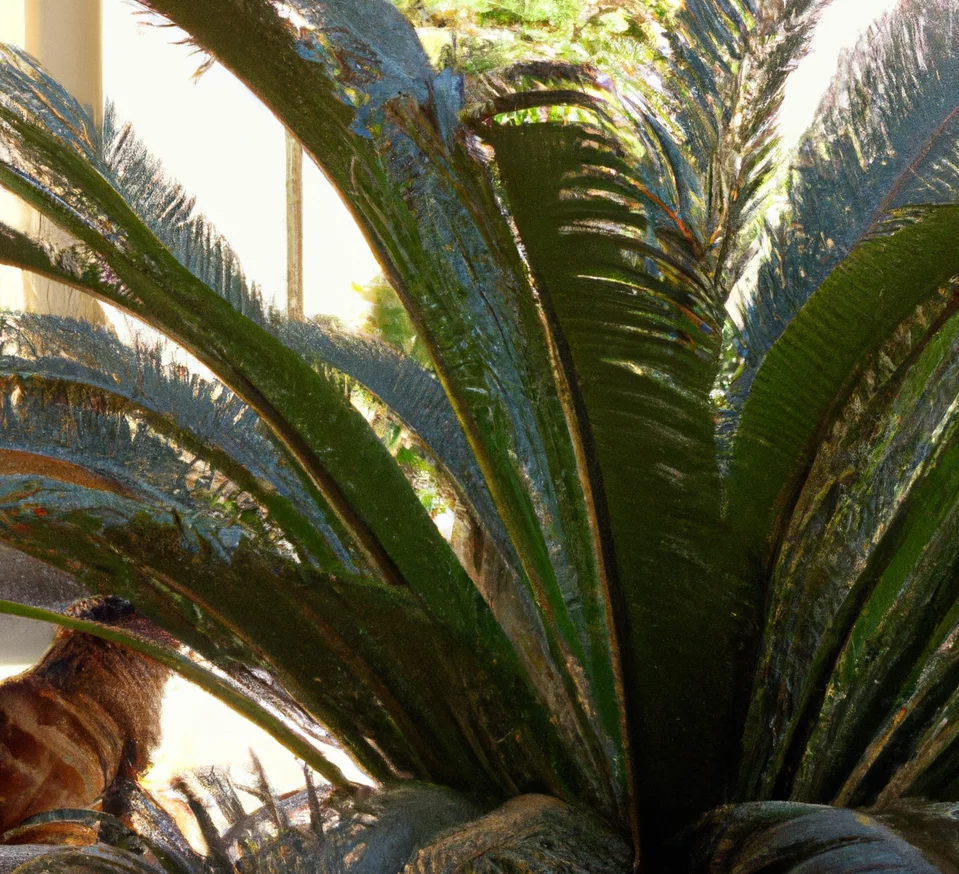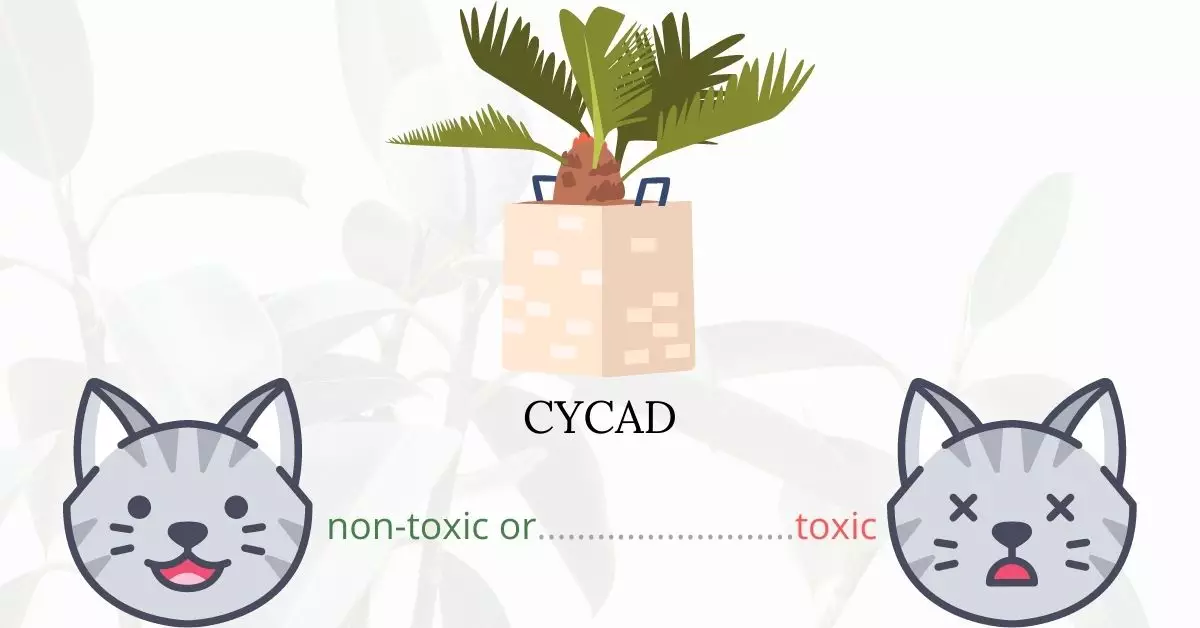Yes, Cycad, commonly known as Sago Palm or Fern Palm, is toxic to cats.
This article has been penned in collaboration with a team of experienced DVMs (doctors of veterinary medicine) who have generously contributed their knowledge on the potential risks of various plants, particularly the Cycad in this case. Our aim is to provide accurate, up-to-date information to safeguard our feline friends. We’ve further authenticated our findings by researching high-authority websites such as the ASPCA and PetMD to ensure comprehensive coverage on every plant.
Cycad plants contain two primary toxins: cycasin and beta-methylamino-l-alanine (BMAA). Cycasin can damage intercellular tissues, leading to the release of oxidants into the bloodstream. In high concentrations, these oxidants can harm liver cells and might culminate in organ failure or even death. BMAA, on the other hand, is a neurotoxin that targets neurons, which can disrupt brain function and impede the nervous system’s communication.
Should your cat ingest any part of the cycad plant, symptoms to watch for include vomiting, jaundice, increased thirst, and bloody diarrhea. If you observe your cat consuming cycad or displaying signs of poisoning, it is imperative to contact your veterinarian immediately.
Clinical Signs of Cycad or Sago Palm Poisoning in Cats

When a cat interacts with a Cycad plant, particularly through ingestion, the toxins present in the plant can induce a range of clinical symptoms. Here’s a detailed breakdown of each symptom and the underlying reasons for their manifestation:
- Drooling: Caused by irritation in the cat’s mouth and throat due to the direct contact with the plant’s toxins.
- Vomiting (possibly with blood): The immediate gastrointestinal distress can lead to vomiting, and the severity of irritation may cause the presence of blood.
- Bloody Diarrhea: The toxins from the Cycad plant can damage the gastrointestinal lining, causing blood in the stools.
- Weakness: This stems from the body’s reaction to the toxins, leading to rapid energy depletion.
- Depression: A systemic response to the toxins, as the body begins to feel the effects of the poisoning.
- Appetite Loss: Due to gastrointestinal discomfort and overall unease from the poisoning.
- Excessive Thirst and Urination: The body attempts to flush out toxins, leading to increased water consumption and subsequently, increased urination.
As the poisoning progresses and particularly impacts the liver, more severe symptoms may manifest:
- Liver Failure: Cycasin causes significant liver damage, which can advance to full organ failure if not treated.
- Pain in the Abdomen: A direct result of liver distress and gastrointestinal irritation.
- Jaundice: Indicates liver dysfunction, where bilirubin accumulates, leading to yellowing of the skin and eyes.
- Bleeding Disorders: As liver function is compromised, the production of proteins essential for blood clotting diminishes, leading to increased bleeding in various areas, such as the nose, mouth, anus, urine, and stool.
- Bruising and Petechiae: Resulting from the reduced ability of the blood to clot.
- Dark, Tarry Stools: A sign of internal bleeding in the upper gastrointestinal tract.
- Seizures, Ataxia, Tremors: These neurological signs result from BMAA affecting the brain’s function.
- Aggressive Behavior: Changes in behavior, like aggression, can arise from neurological disturbances due to the neurotoxin, BMAA.
- Encephalopathy: A broad term for brain disease or damage, caused by the accumulation of toxins and their direct impact on the brain.
It’s essential to recognize these symptoms early and seek immediate veterinary intervention to ensure the best chances of recovery for the affected feline.
First Aid and Treatment of Cycads or Sago Palm Poisoning in Cats

Unfortunately, there is no antidote to cycad poisoning; the focus of the treatment is to prevent further absorption of toxins as well as manage the symptoms. If the ingestion is just recent, gastric decontamination may be done by the veterinarian which may include inducing vomit with ipecac or pumping the cat’s stomach, also called gastric lavage.
Your veterinarian may also give your cat activated charcoal, which binds the poison in the cat’s stomach and eliminates it through a bowel movement. Gastric protectants, such as sucralfate, cimetidine, or famotidine, may be prescribed to coat the stomach lining and reduce stomach acid production. Liver protectants and other medications may be also given if needed in your cat’s condition.
Intravenous fluid therapy may also be done as it is necessary to replace the fluids lost in your cat’s body as a result of severe vomiting and diarrhea. This will also aid in the removal of toxic remnants from your cat’s stomach.
Recovery from Cycad or Sago Palm Poisoning in Cats

After the cat’s condition has stabilized, a bland diet is highly recommended for your cat to minimize distress on his or her stomach. Most cats should be back to their usual selves in two weeks but may take longer depending on the severity of the poisoning.
Prevention of Cycad or Sago Palm Poisoning in Cats
To prevent your cat from another exposure to sago palm, be sure that you do not have one at home or in your yards. Restrict your cat’s outdoor activities to minimize his risk of exposure to toxic plants that grow in your community. If you are leaving the house without them, it is better to keep them confined in a cat cage or playpen.
If you love plants but have cats at home, check out these lists:





